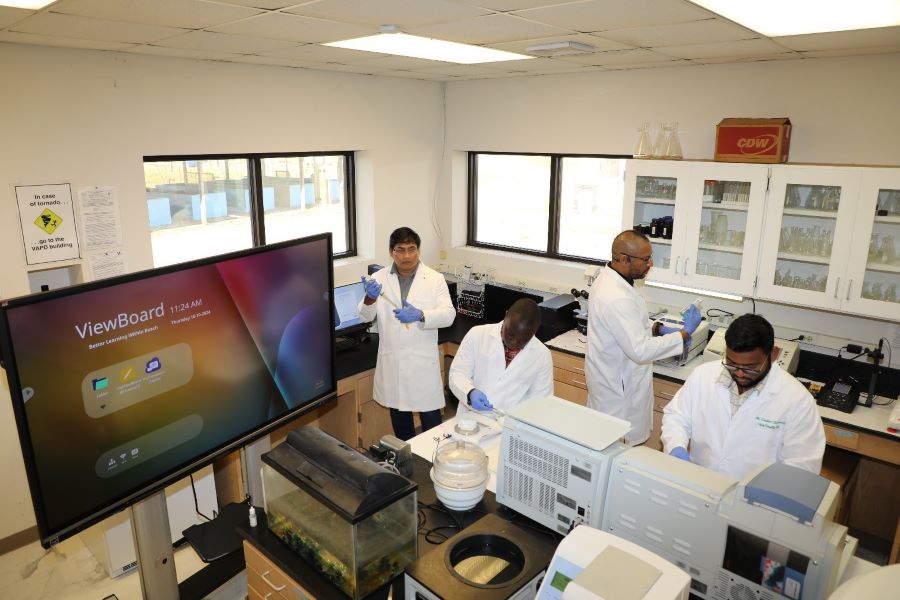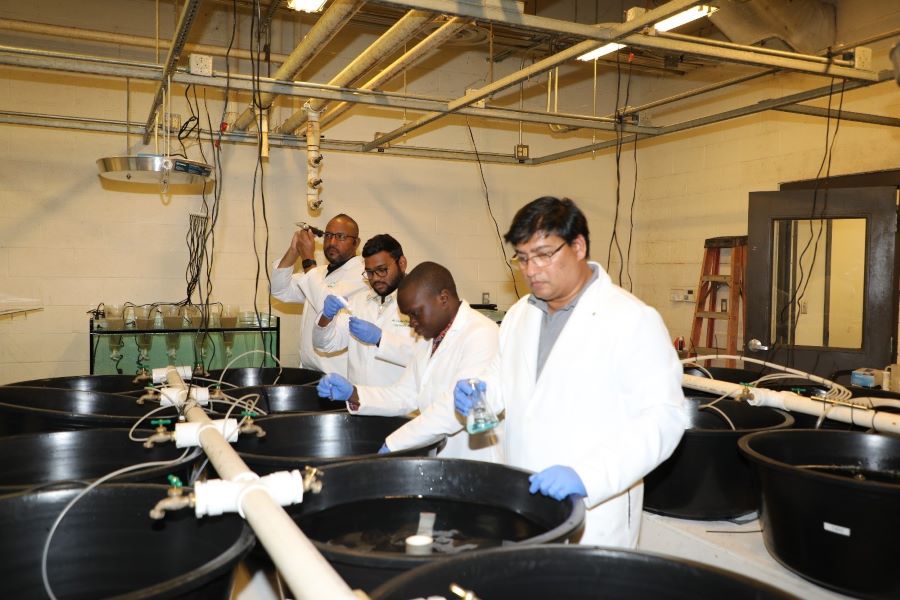The School of Agriculture, Fisheries and Human Sciences (SAFHS) at the University of Arkansas at Pine Bluff (UAPB) is studying Artemia franciscana, a species of brine shrimp, as a sustainable and nutritionally rich ingredient for both aquaculture and poultry feeds, Dr. Yathish Ramena, interim assistant dean for Extension and outreach for the School, said. Dr. Ramena, who also serves as director of UAPB’s Aquaculture and Fisheries Center of Excellence, said Artemia are a crucial live feed in aquaculture and have long been used to nourish larval fish and shrimp due to their high digestibility, rich protein content and essential amino acids and fatty acids.
“The role of brine shrimp in aquaculture is indispensable, providing a reliable and high-quality food source that enhances survival, growth and overall health of aquatic species,” he said. “Given its exceptional nutritional profile, Artemia is now being considered for broader applications, particularly in poultry feed.”
Dr. Ramena said UAPB is launching an initiative to establish Artemia biomass culture to ensure a continuous and sustainable supply of this high-protein feed ingredient. With approximately 60% protein on a dry basis, Artemia offers an excellent alternative protein source for poultry, supporting growth and egg production while promoting sustainable feeding practices.
“One of the key advantages of Artemia culture is its continuous harvesting capability, which makes it an ideal candidate for small-scale, backyard and indoor farming setups,” he said. “Unlike traditional feed sources that require extensive processing and storage, Artemia can be cultured and harvested regularly, providing a fresh and consistent feed supply. This makes it particularly appealing for small-scale farmers and entrepreneurs looking for cost-effective and sustainable poultry nutrition solutions.”
This initiative aligns with UAPB’s broader vision for agricultural and livestock advancements, particularly as the university prepares to develop a new poultry research facility, Dr. Ramena said. The establishment of this facility will further enhance research capabilities, allowing for more in-depth studies on Artemia-based poultry diets and their impact on bird health, growth performance and egg production. The integration of Artemia into poultry feed research at this new facility will provide insight that could lead to novel feeding strategies benefiting both small-scale and commercial poultry producers.
“Additionally, our initiative will provide valuable training opportunities for UAPB’s undergraduate and graduate students,” Dr. Ramena said. “By engaging students in hands-on research, UAPB aims to foster the next generation of scientists, nutritionists and aquaculture specialists. Students will gain practical experience in feed formulation and biomass production at the intersection of aquaculture and poultry nutrition. This will equip them with the skills necessary to address challenges associated with sustainable food production.”
Under Dr. Ramena’s leadership, the UAPB Department of Aquaculture and Fisheries will closely collaborate with the university’s poultry science program to evaluate the impact of Artemia-based feed on poultry growth and egg production.
“By pioneering this initiative, UAPB is not only advancing sustainable feed solutions but also fostering interdisciplinary collaboration between aquaculture and poultry nutrition,” he said. “As this research progresses, it has the potential to reshape feeding strategies in both industries, offering an innovative approach to improving livestock and artemia biomass production.”









